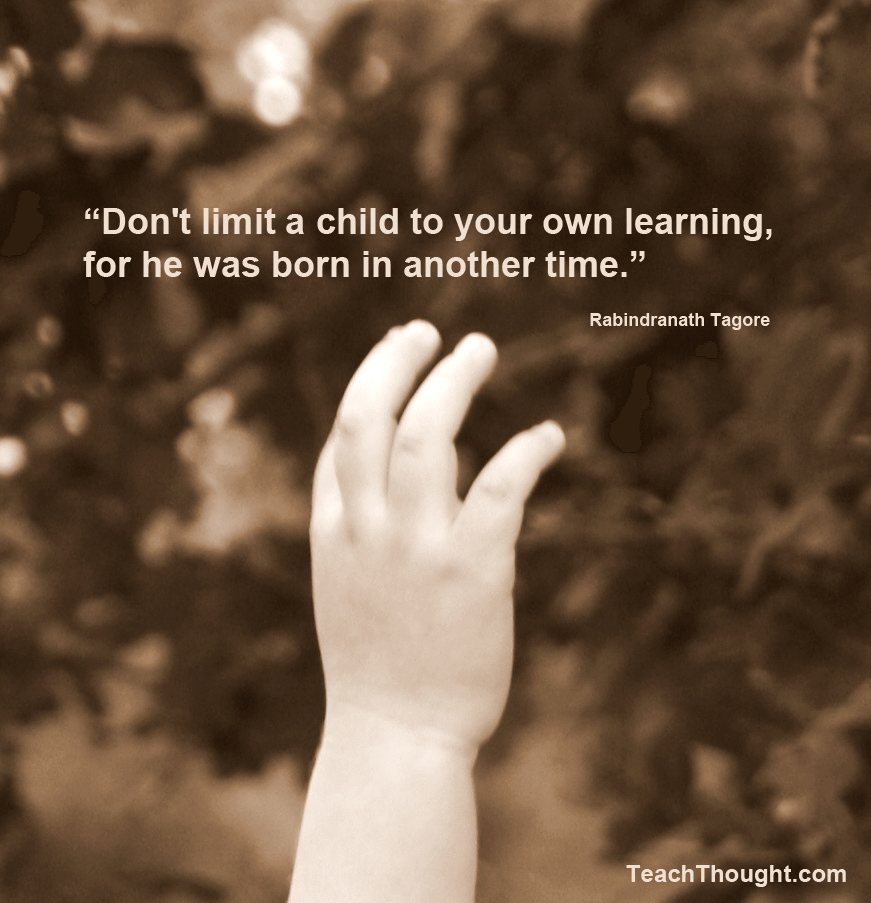A powerful one-sentence argument for progressive learning

[ad_1]
by Teaching staff
Do not limit your child to your learning, for he was born for another time.
R. Tagore
While each generation is unique, with its own challenges, opportunities and cultural contexts, teaching methods and ancestral knowledge often reflect the values and standards of previous eras.
This gap between the needs of the current generation and the teachings of the past can limit children in various ways, hindering their ability to fully engage in and thrive in their contemporary world.
From the moment they enter the world, children are shaped by the values, beliefs and practices of the society into which they are born. However, the education they receive is often heavily influenced by traditional curricula and pedagogical approaches that may not adequately address the complexities and demands of the modern age. This can lead to a disconnect between what children are taught and what they need to navigate and succeed.
This limitation is demonstrated by outdated school curricula that fail to provide children with the skills and knowledge needed for the rapidly evolving labor market. In the age of technological advancement and globalization, traditional subjects and teaching methods may not adequately prepare children for the demands of the digital economy. For example, an emphasis on rote memorization and standardized testing may lead to the prioritization of repetitive facts over the critical thinking, problem solving, and coping skills necessary for success in contemporary workplaces.
Furthermore, affirming outdated societal norms and biases through education can hinder children’s ability to challenge and overcome systemic inequalities. Historical narratives that prioritize the achievements of certain groups while marginalizing others can perpetuate stereotypes and reinforce power dynamics that limit children’s understanding of themselves and others. This can have long-term implications for social cohesion and justice, as children may internalize and replicate these biases in their interactions and decision-making processes.
To address these limitations and better meet the needs of contemporary children, educators and policy makers must adopt a more dynamic and holistic approach to education. This requires a willingness to adapt pedagogical methods and curricula to reflect the realities of the modern world and a commitment to promoting critical thinking, creativity, and empathy in the classroom. By empowering children to question the status quo and think independently, we can ensure that they are better equipped to meet the challenges and opportunities of their generation and contribute meaningfully to society.
Children are born for their own time
Here is a strong argument we have seen for the continued need to develop the mechanisms, curriculum and delivery system for how people learn.
It also explains the generational gap that can hinder this progress as well. We instinctively want to teach the way we learned, even if we fuel it with technology and “cutting-edge trends.”
Quoting also works if you change “in” to “for”. In fact, that’s how we read it the first three times we see it.

Attribution of the image to Flickr user Megabu7.
[ad_2]
Source link




